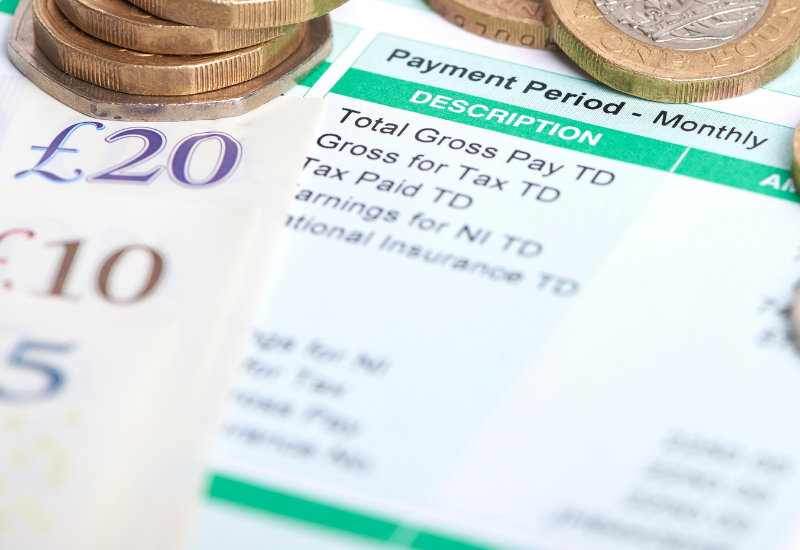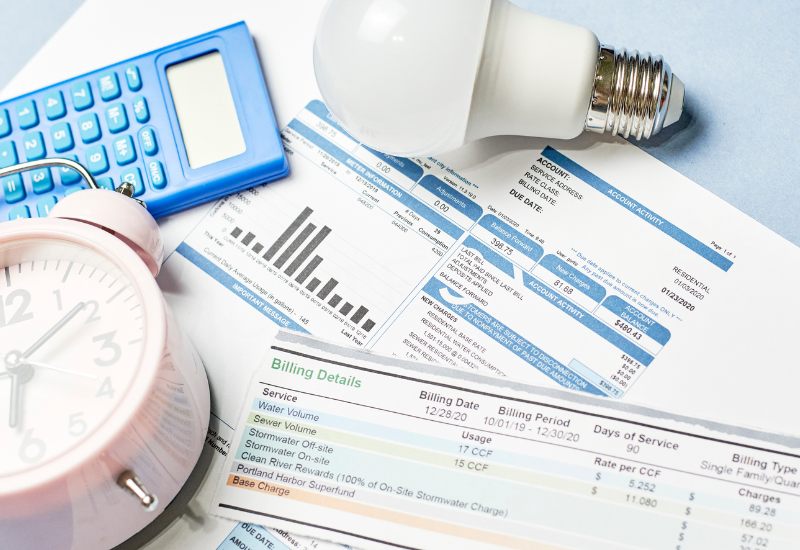Driving innovations forward through RDEC
Know your options, own your options
If you're a big company with big ideas, the RDEC scheme is like your secret weapon, helping you dismantle financial constraints and propel your innovations forward. By following the essential RDEC steps, you can unlock the full potential of this scheme and drive your projects ahead.

What is RDEC? A snapshot
The UK's Government introduced the Research and Development Expenditure Credit (RDEC) programme in 2002 to bolster R&D activities. This initiative is specifically designed for larger businesses and allows them to recover eligible costs linked to their research and development efforts. A successful claim can result in either obtaining a cash refund or reducing a portion of their corporate tax.
Qualifying criteria for RDEC
Size of the company
You must have a headcount
of more than 500 staff
Analysing profitability
Your company’s turnover is
equal to or above €100 million
Balance sheet or gross assets
Or your company has a balance sheet total
of €86 million or above
You need to be a limited liability company engaged in R&D activities, incurring expenses associated with these endeavours within the UK, and also fulfilling obligations of corporation tax.
What are the qualifying
activities for RDEC?
A crucial aspect lies in comprehending the activities or projects capable of involving businesses in the landscape of R&D endeavours, paving the way to capitalise from your RDEC claim effectively. If your technical team faces challenges in overcoming technical obstacles, finding solutions, or harbouring concerns about technical uncertainties, then you are likely to qualify for the R&D tax relief.
Analysing for an RDEC claim
Permitted purpose
You are aiming to enhance the performance, reliability, quality and functionality of a product or software
Technological uncertainty
You are unaware of the project's outcome, and there is a possibility that unforeseen results might occur during the development of a product or software
The process of experimentation
You are engaged in the process of undertaking a trial-and-error phase with the intention of overcoming technological uncertainties
Technological in nature
Your work falls within the domains of engineering, physical sciences, biological sciences, or computer science
What are R&D qualifying costs?
How to calculate your RDEC entitlement?
The RDEC rate has been established at 20% amid the recent changes to R&D tax relief. Businesses are now able to recover up to 20p for every £1 invested in eligible R&D activities. This rate remains consistent irrespective of the financial circumstances, as opposed to the SME scheme.
Example: Estimated R&D expenditure: £500,000 at the RDEC enhancement rate of 13% = £65,000
= £565,000 as above-the-line credit
Calculate the benefit at a corporation tax rate of 19% = £107,350
Accounting treatment for
the RDEC scheme
You have the opportunity to secure credit by inputting your expenses in the comprehensive Company Tax Return form (CT600). Nevertheless, since this claim falls into a special category, the credit will be recorded as additional income within your financial records. This advantageous arrangement can enhance the overall profitability of your enterprise or specific business division that is making the claim.
Based on whether your company is generating profits or experiencing losses, this credit can either offset liabilities or lead to a cash disbursement. However, the RDEC scheme benefit does not factor into the calculations for businesses that make quarterly payments.
Navigating the accounting and taxation aspects of an RDEC claim can be tangled, and this underscores the significance of engaging R&D tax specialists who possess expertise in addressing both the tax and accounting policy ramifications.
How to make an RDEC claim?
To receive your entitlement, you must complete 7 main steps when making an RDEC claim. These steps determine the outcome of your application and how you'll receive the rewards from your R&D efforts, whether it's in the form of credit carried forward or a direct cash payment to your bank.
The 7 steps of an RDEC claim

During this step, you will have to deduct any existing corporation tax obligations from the initial RDEC credit rate. If a credit surplus remains, it proceeds to the second step.

To ensure you receive your RDEC benefit in cash, you need to check if the balance after step 1 exceeds the net credit value. By net credit value, it means the gross credit minus Corporation Tax. If it is the case that the balance is more than the net value of the credit, then this balance should be retained so it can be used in future tax periods.

The R&D tax credits incentive is subject to a cap, known as the PAYE/NIC cap. The purpose of this cap is to prevent misuse of R&D tax relief, particularly considering that employee expenses commonly form a huge portion of a claim's expenditure. It ensures you’re only benefiting the staff members and EPWs who were directly involved in the R&D. This limit is determined by the PAYE and NIC submitted to HMRC for the employees covered by your RDEC application.

Before finalising the cash payment of the credit, HMRC might consider using it to offset any unpaid corporation tax from previous accounting periods rather than sending you a direct payment.

This is the time to choose whether to transfer the entire available credit amount to a group company, reducing their tax obligation for them. If you choose not to do this, you can still receive a cash payment if desired, regardless of the tax responsibilities of other group companies.

Upon reaching this point, any remaining sums will be collected by HMRC to cover outstanding taxes if there are any. These might encompass obligations such as VAT liabilities or overdue PAYE.

Mission accomplished! The cash credit is disbursed and prepared to be reinvested in your business endeavours, including advancing more R&D projects.
How can we help maximise
your RDEC Claim?
Our team of R&D tax credit specialists are deeply passionate about the transformations taking place that have been forged by research and development. Our streamlined RDEC claim process has resulted in good news for hundreds of businesses that have embarked on tackling industry challenges with technological advancement. We're good at what we do, and our high success rate with HMRC means we can help you get back all the money you deserve.
83m+
Retrieved for our clients so far
Reviews from our happy clients
2400+
R&D claims submitted across all sectors
£63,000
Average claim
"I would like to express my sincere thanks to Alexander Clifford for helping my clients with their software and web3 R&D tax credit claims. They provided invaluable support throughout the process, providing expertise and advice at every step. They were very responsive to our clients needs and able to help us understand the complex regulations associated with the tax incentives. We are extremely grateful for their help, and wouldn't have been able to complete clients projects without them. Highly recommended and looking forward to working with you again!"
CryptoCountancy Ltd

Frequently Asked Questions
The key distinction lies in accounting procedures. An SME R&D claim adjusts taxes through an enhanced deduction, impacting profits or losses without taxation. Conversely, an RDEC claim involves a percentage of qualifying costs treated as income, affecting profits and losses with taxation. RDEC is more complex than obtaining an R&D Tax Credit due to its multi-step process. While guidelines align, specific matters like grants and subcontractor rules vary between SME and RDEC claims.
Your eligibility for research and development (R&D) tax credits may vary based on shifts in your staff headcount, turnover, and gross assets. These factors determine whether you qualify for the SME R&D tax credit scheme or the research and development expenditure credit (RDEC) scheme.
After compiling and submitting the claim, it typically takes HMRC around 4-6 weeks to process it. However, during peak periods, this processing time might be longer. Following the processing period, payment is usually made within 14 days.
No, group companies would make their claims as separate limited companies. It's essential to take group relief into account when calculating the benefits of the claim. The SME status assessment should be done collectively for all the companies within the group. If one group company has already made an R&D claim, other group companies cannot apply for advanced assurance. Group relief is a significant factor in determining a payable RDEC.
Yes, there are different R&D rates depending on whether you’re profit making or operating at a loss. For larger loss-making companies, who claim under RDEC, the payable RDEC is based on various caps and offset. Every claim for RDEC tax credit is submitted using the Company Tax Return form (CT600). Under the RDEC scheme, regardless of your company's profitability, all applicants are treated equally and can avail the current RDEC rate of 20%. You can receive your RDEC tax credit in various ways if your company is in a tax loss position: ● Immediate cash refund: You can receive a cash refund calculated at 14.5% of the surrendered losses within the relevant period. ● Carry back the loss: If you had taxable profits in the past, you can offset the loss against them and receive a tax refund. ● Group relief: If your company is part of a larger group, you can offset your losses against taxable profits within the same tax group.







